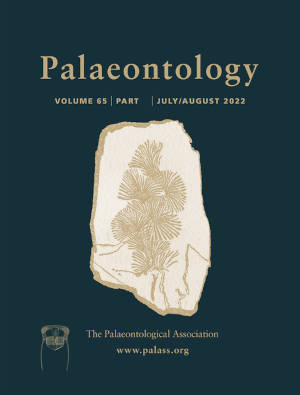Article: Deep origin of the crossed-lamellar microstructure in early Cambrian molluscs
Publication: Palaeontology
Volume:
65
Part:
4
Publication Date:
2022
Article number:
e12620
Author(s):
Luoyang Li, Christian B. Skovsted, and Timothy P. Topper
Abstract
Abstract Aragonitic crossed-lamellar (CL) is one of the most commonly formed and extensively studied molluscan shell microstructures, yet its origin and early evolution within the Mollusca remains poorly understood. Here, a primitive CL microstructure from one of the oldest gastropods, Pelagiella madianensis, and the problematic hyolith Cupitheca sp. of the Cambrian Series 2 Xinji Formation on the North China Platform, was investigated. In P. madianensis, detailed characterization has revealed a typical four-ordered hierarchical organization of aragonitic crystallites, and a thick layer of organic membranes surrounding its first-order lamellae. A transitional fibrous microstructure was observed between the outer CL and inner foliated aragonite structural layers. In Cupitheca sp., only the first and second-order lamellae were visible due to preservation limitations, and the first-order lamellae were extremely irregular in shape and size, which is consistent with modern representatives. This study demonstrates that the capability to construct highly-mineralized intricate shells was acquired in early Cambrian stem-group gastropods. The CL microstructure first emerged in the early Cambrian and as a basal synapomorphic trait in total-group molluscs. Moreover, presence of the CL microstructure in problematic lophotrochozoans (i.e. hyoliths) is confirmed. This study contributes to a more complete picture of the evolutionary origin and architectural diversity of biomineralized mollusc shells during the Cambrian explosion, and strengthens the phylogenetic links between hyoliths and molluscs.
